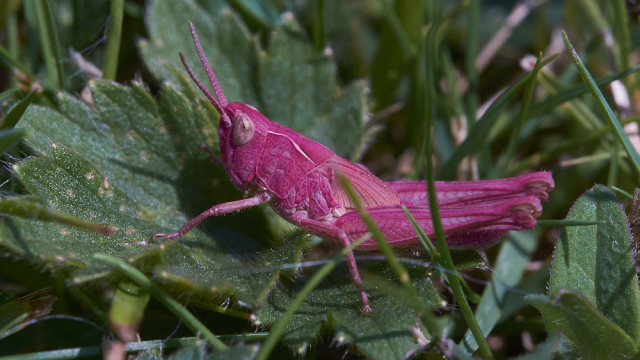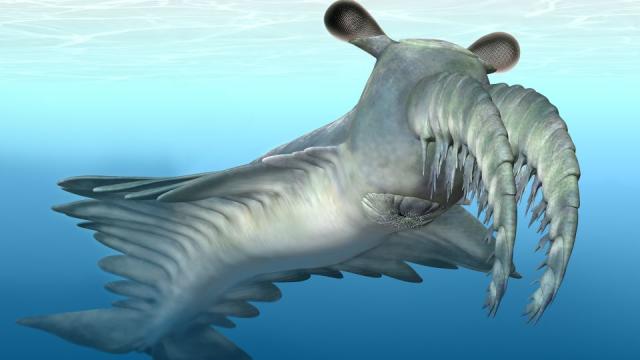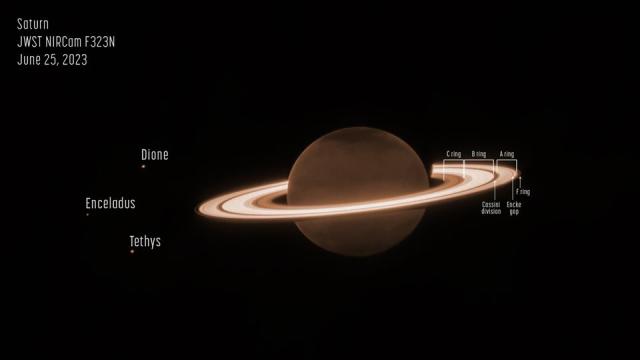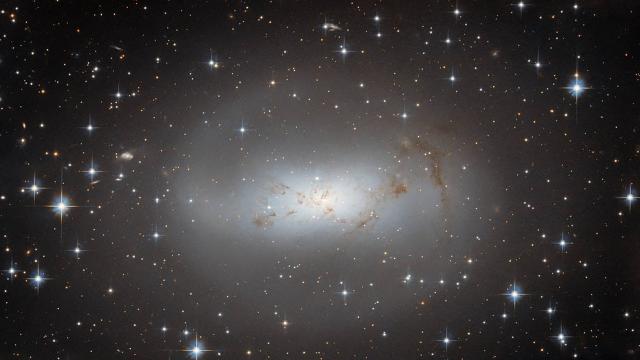Science Daily News | 05 Jul 2023

Views (113)

Drax power plant could lose subsidies over compliance
The UK's wood-burning Drax power plant is being investigated over sustainability compliance.

Energy subsidies to the UK's largest renewable power station could be withdrawn if sustainability rules have not been followed, a minister has said.
The House of Lords heard concerns over the environmental credentials of the Drax-owned site, near Selby, which burns biomass, such as wood pellets.
It heard Ofgem was investigating whether Drax had been complying with sustainability requirements.
Drax said it had strict governance in place to oversee compliance.
The industry claims the wood burned by Drax is sustainably sourced from forestry waste, but critics have raised doubts over the veracity of this.
The House of Lords heard that some £11bn in government subsidies has been given to Drax for its renewable schemes.
During the debate, Labour peer Baroness Jones called for independent scientists to be sent to Canada to verify the sustainability of wood used to make biomass pellets.
Addressing Lord Callanan, the Minister for Energy Efficiency and Green Finance, she said: "Is the minister concerned that Drax's claim to be using sustainably-sourced wood from Canadian forests currently lacks any detailed full-cycle carbon accounting and audit trail that we would have the right to expect for that level of subsidy?"
Independent crossbencher Baroness Boycott referenced information from Canadian environmentalists who she said had reported "the ancient forest being destroyed for those wood pellets".
She added: "Why on earth do you still persist in saying that we are jumping to conclusions, when you're burying your head in the sand?"
In response, Lord Callanan said Ofgem was investigating matters and said: "If it is proved that they are not in compliance, then of course some of the value of the certificates they have received will be withdrawn."
He added: "Forgive me if I don't necessarily take as absolute facts the statements by some of the Canadian environmentalists.
"Ofgem are investigating whether the biomass is sustainable or not. Let's wait for the outcome of that investigation."
Drax said: "We are confident in our business and operations and committed to ensuring the biomass we source delivers positive outcomes for the climate, for nature and for the communities in which we operate."
Ancient shrimplike predator was misunderstood, according to new research
A new analysis of the extinct marine animal Anomalocaris canadensis suggests the Cambrian hunter was more of a weakling than once assumed.

With appendages growing out of its head and an armored mouth, an ancient shrimplike creature was thought to be the quintessential apex predator of its time.
This sea creature earned its fearsome reputation because paleontologists thought it was responsible for the scarring and crushing of the fossilized skeletons of trilobites — early hard-shelled invertebrates that skittered along the seafloor before dying off in the mass extinction that gave way to the dinosaurs.
“That didn’t sit right with me, because trilobites have a very strong exoskeleton, which they essentially make out of rock, while this animal would have mostly been soft and squishy,” said lead author Russell Bicknell, a postdoctoral researcher in the American Museum of Natural History’s division of paleontology, who conducted the work while at the University of New England in Australia.
Earlier research had suggested that Anomalocaris’ mouth parts weren’t able to process hard food, so Bicknell and his colleagues focused on whether its long and spiny appendages would be able to chew up trilobite prey.
Using present-day whip scorpions and whip spiders as analogs because they sport similar appendages that allow them to grasp prey, the study team was able to show that the predator’s segmented appendages were able to grab prey and could both stretch out and flex.
However, the team’s analysis suggested the marine animal was more of a weakling than initially assumed and was “incapable” of crushing hard-shelled prey with the two structures, according to the study published Tuesday in the journal Proceedings of the Royal Society B.
It’s more likely the creature, which Bicknell described as being a cross between a shrimp and a cuttlefish, was probably agile and fast and darted after soft prey in well-lit open water rather than pursue hard-shelled creatures on the ocean floor.
“Previous conceptions were that these animals would have seen the Burgess Shale fauna as a smorgasbord, going after anything they wanted to, but we’re finding that the dynamics of the Cambrian food webs were likely much more complex than we once thought,” Bicknell said in a statement.
Saturn’s rings shine in new Webb telescope photo
NASA’s James Webb Space Telescope has captured its first near-infrared observation of Saturn, highlighting details in the planet’s atmosphere and rings.

In the image, Saturn itself appears extremely dark due to the near-total absorption of sunlight by methane gas. The rings, however, remain bright, creating the “unusual appearance” of the planet in this photo, according to NASA.
The image was taken with Webb’s Near-Infrared Camera, known as NIRCam, as part of a Webb program that involves several exceptionally deep exposures of Saturn, according to NASA. These exposures test Webb’s ability to spot faint moons around the planet and its rings, since any newly discovered moons could help scientists better understand Saturn’s present and past systems.
Unexpectedly, “the large, diffuse structures in the northern hemisphere do not follow the planet’s lines of latitude, so this image is lacking the familiar striped appearance that is typically seen from Saturn’s deeper atmospheric layers,” according to NASA.
Differences in the looks of Saturn’s northern and southern poles are normal, according to NASA, as the northern region experiences summertime while the southern hemisphere is exiting winter darkness. But the darker-than-usual appearance of the northern hemisphere could be from “an unknown seasonal process affecting polar aerosols in particular,” NASA says.
The brightening near the edge of Saturn’s disk might be due to high-altitude methane fluorescence (the process of emitting light after absorbing light) or emissions in the planet’s ionosphere or both.
Launched on Christmas Day in 2021, Webb can study the beginning of time more closely, hunt for unobserved formations among the first galaxies, and peer inside dust clouds where stars and planetary systems are currently forming.
Over the years, Saturn’s atmosphere and rings have been observed by other missions such as NASA’s Pioneer 11, Voyagers 1 and 2, the Cassini spacecraft and the Hubble Space Telescope. In the future, additional and deeper exposures from Webb will help astronomers examine fainter rings around Saturn, according to NASA.
These new observations from the Webb telescope “are just a hint at what this observatory will add to Saturn’s story in the coming years,” NASA says, “as the science team delves deep into the data to prepare peer-reviewed results.”
The UK's ODIN Space just aced its 1st space junk tracking system test in orbit
ODIN Space's demonstration team confirmed their new debris sensor successfully recorded acoustic data during its recent on-orbit test, bringing micro-space debris tracking a step closer to reality.

A new method of tracking tiny pieces of space junk has passed its first demonstration test in orbit, according to its builders ODIN Space of London.
Now, after more than a week on orbit, ODIN has confirmed with D-Orbit that their onboard sensor is operational, and picked up faint acoustic vibrations from its host satellite. For this demo flight, ODIN's debris sensor was set to an exceptionally high sensitivity, to ensure even the smallest of readings from the ION satellite could be detected.
Related Stories:
Now, ODIN plans to scale up the technology in order to bring the technology to the commercial market. Once operational, ODIN's sub-centimeter sensor will be able to track the size, location and, for the first time, the speed and trajectory of debris measuring as small as 1/250th of an inch (0.1 millimeters).
With this trajectory mapping, ODIN strives to build complex models of sub-centimeter debris to improve situational awareness for thousands of satellites in Earth orbit.
Hubble telescope checks on the Milky Way galaxy's lonely neighbor (photo)
The Hubble Space Telescope has spied on the Milky Way's galactic neighbor, irregular galaxy ESO 174-1, imaging it as a lonely hazy cloud.

The Hubble Space Telescope is spying on the neighbors again.
Alternatively, irregular galaxies could be created when two galaxies collide, resulting in a new, single galaxy lacking a well-defined shape. Larger irregular galaxies may also represent a step in galactic evolution between a spiral galaxy and a galactic type called an elliptical galaxy. This latter class of galaxies is also believed to be born from the merger of spiral galaxies. Elliptical galaxies are rarer than spiral galaxies and tend to have completely oval or round shapes.
RELATED STORIES:
Observing programs like this one let Hubble move gradually from one observation to another while still gathering data, ensuring every minute of the observing time of the space telescope is used.
Rare pink grasshopper spotted in garden
It is an incredibly rare sight - but recent warm weather is helping them survive for longer.

An amateur photographer was stunned after he spotted a rare pink grasshopper at the bottom of his garden.
Gary Phillips, 65, was pruning his dahlias in Llandegfan, Anglesey, when he was shocked by the "vivid colour" of the insect.
"I'd never heard of them," said Mr Phillips, who then crawled across his garden with his camera to snap some pics.
Some experts have suggested people have only about a 1% chance of seeing a pink grasshopper in their lifetime.
"I had to proper focus on what I'd seen, and realised it was a pink grasshopper which I thought has got to be rare," Mr Phillips added.
Despite its small size, the hot pink of the grasshopper stood out and Mr Phillips was captivated, watching it hop across his lawn.
The green meadow grasshopper species is common across the UK, however - as the name suggests - these are generally green, brown or a combination of the two.
It is believed on rare occasions, a genetic mutation causes them to turn pink.
This makes seeing them even rarer again, as their bright colours mean they are unable to hide from predators and do not survive very long.
It is known as erythrism, which causes too much red pigment and not enough black.
He explained that being pink in the wild is "not useful" for the insect as they stand out from the green grass.
However, in the summer months, when the grass changes colour, it increases their survival chances as they are less noticeable.
While some experts have tried to describe how rare they are by saying people have a 1% chance of encountering them, Mr Hetherington said this is only true if you're not actively looking.
"If you look closely for them in any meadow, the chances of seeing them are actually very high," he said, adding that he has in fact seen three himself.
"It's amazing to see the beauty of the creatures being appreciated," he added.
"They are just wonderful."
0 Likes
